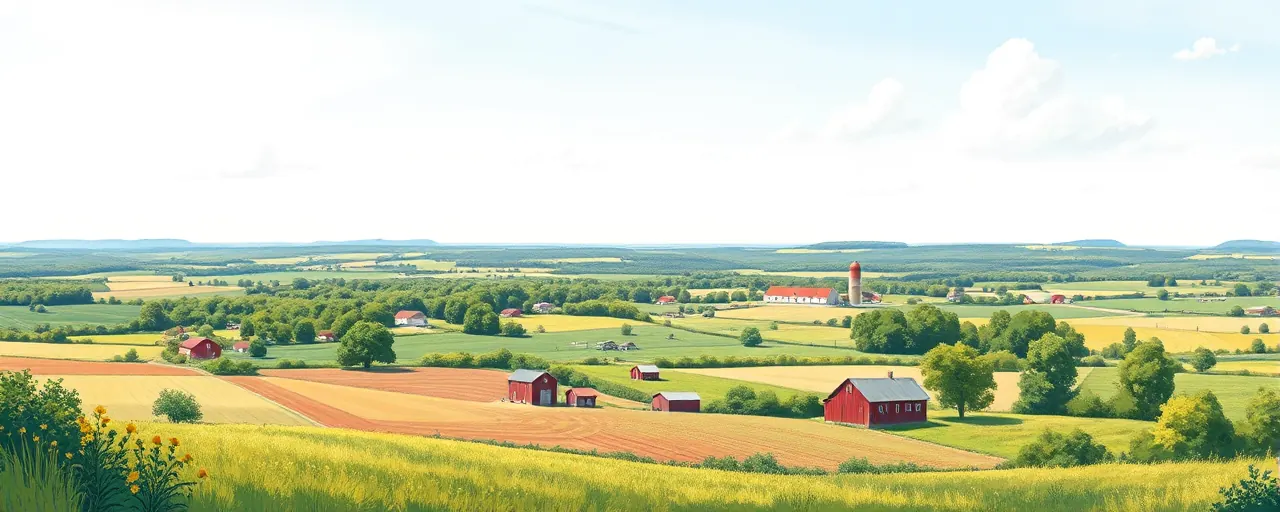A Milestone for New York’s Farms
New York State has poured nearly $125 million into farm projects since 2020, targeting climate change and natural resource protection. This investment, announced during Earth Week 2025, has reached over 6,500 farms through programs like the Climate Resilient Farming Grant Program and Agricultural NonPoint Source Abatement and Control. These efforts have slashed 661,633 metric tons of carbon dioxide emissions, equivalent to taking more than 154,000 cars off the road for a year. The scale of the initiative highlights a growing push to align agriculture with environmental goals.
The projects focus on practical measures, such as planting cover crops, restoring wetlands, and managing manure to curb nutrient runoff. Farmers, working with local Soil and Water Conservation Districts, have adopted practices that not only reduce greenhouse gases but also shield their operations from extreme weather. Yet, as New York celebrates this milestone, questions linger about balancing these environmental gains with the economic pressures farmers face in a volatile market.
On-the-Ground Impact
The numbers tell a compelling story. Across New York, 87,930 acres of cover crops now help sequester carbon and prevent soil erosion. Another 445 acres of wetlands have been restored, bolstering wildlife habitats and improving downstream water quality. Farmers have installed 169 waste storage facilities to manage manure sustainably and laid down 29,080 feet of irrigation pipelines to optimize water use. These efforts, guided by science-based planning, aim to make farms more resilient to floods, droughts, and heatwaves.
Local Soil and Water Conservation Districts play a pivotal role, helping farmers navigate funding applications and implement projects. For instance, 380 acres of riparian buffers now line streams, filtering pollutants and stabilizing banks against erosion. Such measures are critical in a state where heavy rains and flooding have become more frequent, threatening both farmland and water quality. Farmers say these projects not only protect the environment but also cut long-term costs by reducing soil loss and improving yields.
Still, not every farmer sees immediate benefits. High upfront costs and complex grant processes can deter smaller operations, which often lack the resources to compete for funding. While the state’s investment is substantial, it’s spread thin across thousands of farms, leaving some to question whether the scale matches the urgency of climate challenges.
Economic Realities Meet Environmental Ambition
Farming in 2025 is a high-stakes balancing act. Rising input costs, unpredictable weather, and fluctuating commodity prices squeeze profit margins, making government support a lifeline for many. New York’s programs aim to ease this burden by funding practices that lower costs over time, like no-till farming, which reduces fuel use, or cover cropping, which boosts soil fertility. Some farmers also tap into carbon markets, earning payments for sequestering carbon, though these markets remain nascent and volatile.
Nationally, the economic picture is mixed. The American Relief Act of 2025 has funneled billions into disaster recovery and direct payments to stabilize farm incomes after a brutal 2024 production year. Yet, federal conservation funding faces scrutiny, with some lawmakers pushing to redirect resources toward traditional crop insurance or commodity supports. In New York, state-level programs fill gaps left by federal uncertainty, but farmers still grapple with accessing funds and adapting to shifting policy priorities.
The tension between economic survival and environmental stewardship is real. While sustainable practices can improve resilience, they often require upfront investments that not all farmers can afford. For every farm that secures a grant, others miss out, raising questions about equity and access in a state with diverse agricultural needs.
Diverse Voices, Shared Goals
New York’s approach has drawn praise from farmers, environmental advocates, and local officials. State Agriculture Commissioner Richard Ball has emphasized the role of partnerships in driving progress, crediting farmers and conservation districts for turning funds into tangible results. Meanwhile, voices like State Senator Michelle Hinchey highlight the broader stakes, framing farmers as key players in fighting climate change while securing the state’s food supply.
Others take a more cautious view. Some farmers and agricultural groups argue that funding should prioritize flexibility, allowing local needs to guide projects rather than tying dollars to specific climate goals. They point to the success of voluntary, incentive-based programs, which encourage participation without heavy-handed regulations. This perspective aligns with broader national debates, where some policymakers advocate streamlining conservation programs to focus on farm viability over environmental mandates.
The common thread is a recognition that agriculture must adapt. Whether driven by economic necessity or environmental urgency, stakeholders agree that supporting farmers through technical assistance, funding, and innovation is critical. New York’s programs reflect this shared goal, even as debates persist over how best to allocate resources.
Looking Ahead
New York’s $125 million investment marks a significant step, but it’s just one piece of a larger puzzle. As climate change intensifies, farmers face growing risks from extreme weather and shifting growing seasons. State programs, bolstered by federal grants and local expertise, offer a blueprint for balancing productivity with sustainability. Yet, the path forward hinges on addressing barriers like funding access and economic uncertainty, ensuring that all farmers can benefit.
The broader challenge is maintaining momentum. With federal conservation policies in flux and global markets unpredictable, New York’s leadership in state-level programs stands out. By investing in practices that protect soil, water, and air, the state is betting on a future where farms not only survive but thrive. For now, the work continues, one cover crop, one wetland, one resilient farm at a time.
